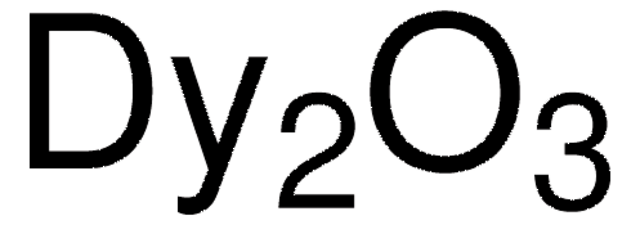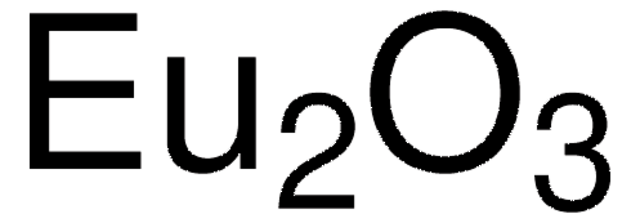637289
Dysprosium(III) oxide
nanopowder, <100 nm particle size, 99.9% trace metals basis
Sinónimos:
Didysprosium trioxide, Dysprosia
About This Item
Productos recomendados
Nivel de calidad
Ensayo
99.9% trace metals basis
Formulario
nanopowder
idoneidad de la reacción
reagent type: catalyst
core: dysprosium
tamaño de partícula
<100 nm
densidad
7.81 g/mL at 25 °C (lit.)
cadena SMILES
O=[Dy]O[Dy]=O
InChI
1S/2Dy.3O
Clave InChI
NLQFUUYNQFMIJW-UHFFFAOYSA-N
¿Está buscando productos similares? Visita Guía de comparación de productos
Categorías relacionadas
Código de clase de almacenamiento
11 - Combustible Solids
Clase de riesgo para el agua (WGK)
WGK 2
Punto de inflamabilidad (°F)
Not applicable
Punto de inflamabilidad (°C)
Not applicable
Equipo de protección personal
Eyeshields, Gloves, type N95 (US)
Elija entre una de las versiones más recientes:
¿Ya tiene este producto?
Encuentre la documentación para los productos que ha comprado recientemente en la Biblioteca de documentos.
Artículos
Currently, magnetic nanoparticles (MNPs) are attracting a lot of attention because of the possibility of many novel applications, especially in biomedical research.
Magnetic materials permeate numerous daily activities in our lives. They are essential components of a diversity of products including hard drives that reliably store information on our computers, decorative magnets that keep the shopping list attached to the refrigerator door, electric bicycles that speed our commute to work, as well as wind turbines for conversion of wind energy to electrical power.
The application of magnetism and magnetic materials pervades our modern civilization in the form of electrical power, communications and information storage.
Nuestro equipo de científicos tiene experiencia en todas las áreas de investigación: Ciencias de la vida, Ciencia de los materiales, Síntesis química, Cromatografía, Analítica y muchas otras.
Póngase en contacto con el Servicio técnico






